The little inmates of the orphans’ home at Greenport, under the supervision of their matron, gathered a lot of wild flowers, and decorated the graves of the insane dead, who have been buried at the asylum cemetery. The deed was a worthy one, and to the little ones is given a great deal of credit for doing this act of mercy to the unfriended dead.
The above are lines I used in a section of my latest book, The Ghosts of Heaven. I cannot take credit for them however; they came from a small newspaper article written in the early 20th century, something I came across in my research for the book.
This research opened up for me a lost world of forgotten dead, as well as a great deal of poignant imagery of dereliction.
The way we treat members of society with mental health problems has changed over the years; for simple evidence of this we might note that the language we use to refer to the mentally ill has itself changed. In the old days, those with such problems were dispatched to the ‘lunatic asylum’, which were little more than prisons, dumping grounds that enabled society to keep the mentally ill away from the rest of us. The 19th century saw a long overdue attempt to bring mental health care out of the dark ages; the work of doctors like Pinel and Charcot in Paris witnessed the first real attempts to actually help and cure their patients, rather than just let them rot away their lives in a cell. Lunatic asylums were re-christened insane asylums (which would in turn be renamed psychiatric hospitals in the 20th century). In America too, things were changing. I began to read about the work of Dr Thomas Kirkbride, who in 1854 published On the Construction, Organization, and General Arrangements of Hospitals for the Insane, essentially a complete instruction manual for the building and running of a new kind of hospital.
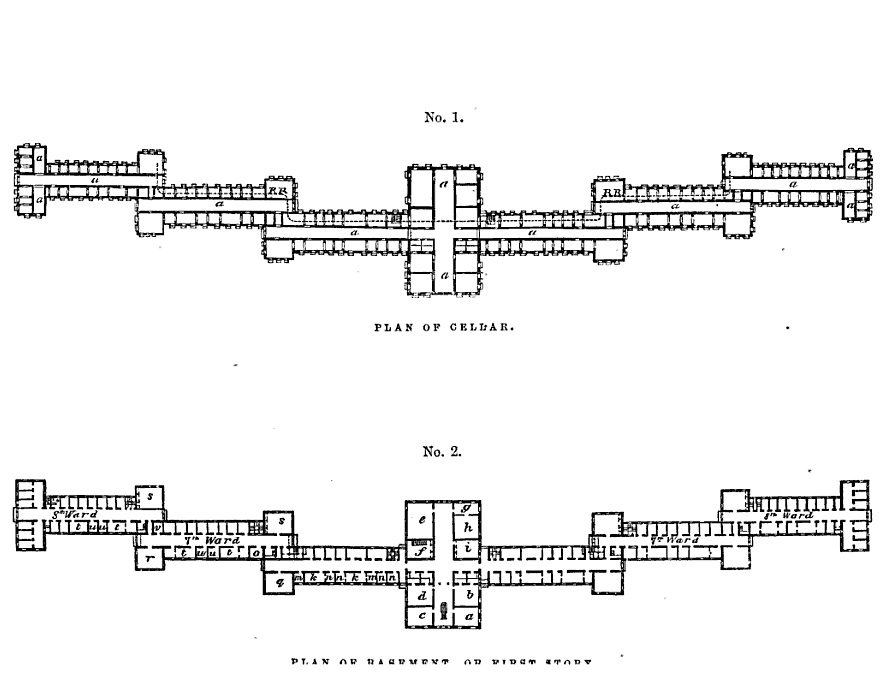
Kirkbride’s ideas were fresh and new, and at the core was the concept that the building in which the mentally ill were housed had a major part to play in their recovery or decline. Kirkbride hospitals were often built on high land, with fine views of the countryside. The buildings were designed in a clever series of staggered wings, that allowed much more light to penetrate the corridors and rooms, which were larger than in former structures. Kirkbride ran his hospitals as small towns, each with its own farm, orchards, vegetable and ornamental gardens, workshops, as well as the darker elements of any town; crematoria and cemeteries. He intended that they should run as self-sufficiently as possible and that the inmates themselves should participate in whatever work they were able to; it was to their own benefit to be a useful member of society, rather than only as a helpless patient without chance of recuperation.
Well over a hundred Kirkbride hosptials were built, mostly in America, but some across the world too—it seemed that this was the new, modern way of caring for our mentally ill, but things were, of course, to change. The 20th century saw the arrival of a different approach to mental health—medication. With the new developments in pharmaceuticals, in anti-psychotic and anti-depressant drugs, the need for large places in which to incarcerate the mentally ill lessened. The vast cost of running such establishments was also a factor—medicated patients who can lead normal lives in the general community place less burden on the state. And so, these vast buildings began to close their doors. Some were razed to the ground, some have been turned into fancy apartments such as the one I visited in Danvers, MA.
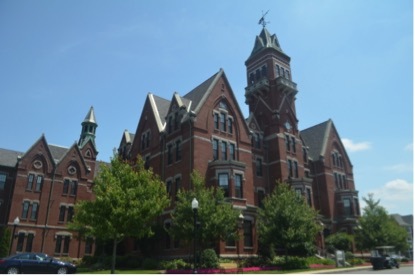
One lucky building, in Salem, OR was being turned into a social history museum at the time I visited it. This is especially welcome; the Kirkbride in Salem was the setting of Ken Kesey’s novel One Flew Over the Cuckoo’s Nest, and the movie was filmed there too.
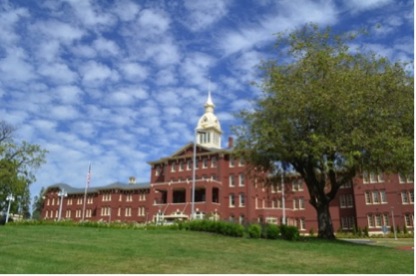
But for many Kirkbrides, the result of the changing nature of mental health care has led to them standing empty, rotting away just as the ill once did in their medieval forebears, the old lunatic asylum. While some have been saved in the ways I describe above, the vast cost of even demolishing them has left many in limbo, derelict and forgotten to all but a few people who champion their survival
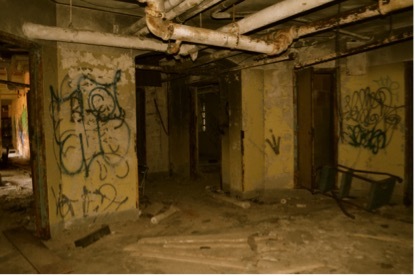
I was lucky enough to be able to get inside a couple of these derelict hospitals during the research phase on the book, and I’m glad I did. It’s too obvious to say that they’re somewhat creepy places to venture into. There is that about them, of course, but under that, there’s something deeply poignant. I’ve come to think that any derelict building has a certain power about it, even somewhere that was once as mundane as possible: a gas station or roadside diner. Derelict buildings speak to us directly about our mortality and frailty as a species—whether you’re thinking about it consciously or not, a building that has fallen into disuse is telling you stories about broken hopes and forgotten aspirations. When that building also once happened to be a hospital in which to house and hopefully cure those of our society unfortunate enough to suffer from mental health problems; the story it’s telling is even more poignant.
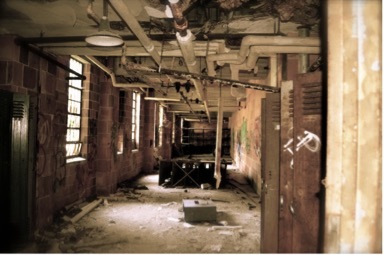
In the basement of the Kirkbride in Salem, Oregon, was once a ‘library of dust’—shelves holding small copper canisters containing the cremated and unwanted remains of those who had lived their lives to the very end in the hospital, and who died without friend or relative to claim the ashes. Nothing on earth can speak of greater sadness than this; to die, unknown and unloved. The work of the photographer David Maisel in capturing these and other objects of the old asylum, along with the work of those who campaign to save the last remaining Kirkbrides from the wrecking ball is vital, to secure at last a place in our collective memory for the ghost of those who died, forgotten and insane.
Marcus Sedgwick has always been fascinated with spirals, which occur throughout nature from the microscopic to the interstellar. Fundamentally elegant and mesmerizing, many cultures and individuals have ascribed a special meaning to the form. He is the author of more than a dozen books for young adults, most recently She Is Not Invisible, Midwinterblood, which won the 2014 Michael L. Printz Award, White Crow, and Revolver, a Printz Award Honor Book. He lives near Cambridge, England.











As odd and sad as it seems, one of the primary means to remember these forgotten souls is the ghost hunting shows. They not only speak of the history, some have urged the living to commorate the dead to bring them peace.